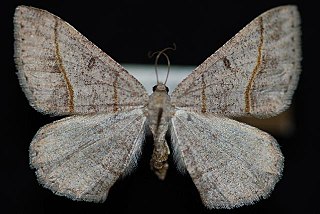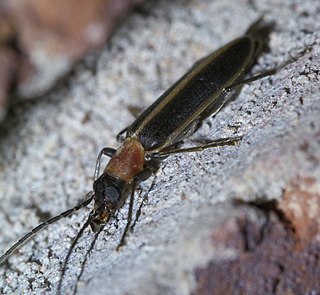
Convolvulaceae, known commonly as the bindweed or morning glory family, is a family of about 60 genera and more than 1,650 species of mostly herbaceous vines, but also trees, shrubs and herbs, and also including the sweet potato and a few other food tubers.

The Hawaiian Islands are an archipelago of eight major islands, several atolls, numerous smaller islets, and seamounts in the North Pacific Ocean, extending some 1,500 miles from the island of Hawaiʻi in the south to northernmost Kure Atoll. Formerly the group was known to Europeans and Americans as the Sandwich Islands, a name that James Cook chose in honor of the then First Lord of the Admiralty John Montagu, 4th Earl of Sandwich. Cook came across the islands by chance when crossing the Pacific Ocean on his Third Voyage, on board HMS Resolution; he was later killed on the islands on a return visit. The contemporary name of the islands, dating from the 1840s, is derived from the name of the largest island, Hawaiʻi Island.

The Integrated Taxonomic Information System (ITIS) is an American partnership of federal agencies designed to provide consistent and reliable information on the taxonomy of biological species. ITIS was originally formed in 1996 as an interagency group within the US federal government, involving several US federal agencies, and has now become an international body, with Canadian and Mexican government agencies participating. The database draws from a large community of taxonomic experts. Primary content staff are housed at the Smithsonian National Museum of Natural History and IT services are provided by a US Geological Survey facility in Denver. The primary focus of ITIS is North American species, but many biological groups exist worldwide and ITIS collaborates with other agencies to increase its global coverage.

Elaeagnus angustifolia, commonly called Russian olive, silver berry, oleaster, or wild olive, is a species of Elaeagnus, native to western and central Asia, Iran, from southern Russia and Kazakhstan to Turkey, and parts of Pakistan. As of 2020, it is widely established in North America as an introduced species.

Elmidae, commonly known as riffle beetles, is a family of beetles in the superfamily Byrrhoidea described by John Curtis in 1830. Both adults and larvae are usually aquatic, living under rocks in fast-flowing shallow areas of streams, such as riffles, feeding on algae and biofilms. There are more than 150 genera and 1,500 described species in Elmidae. The oldest record of the group is Cretohypsilara from the Cenomanian aged Burmese amber.

Asclerini is a tribe of beetles in the family Oedemeridae.
Pero zalissaria is a species of geometrid moth in the family Geometridae. It is found in North America.
Aradus vadosus is a species of flat bug in the family Aradidae. It is found in North America.

Lepidostoma is a genus of bizarre caddisflies in the family Lepidostomatidae. There are more than 150 described species in Lepidostoma.

Digrammia neptaria, the dark-bordered granite, is a species of geometrid moth in the family Geometridae. It is found in Central America and North America.

Oxycopis is a genus of false blister beetles in the family Oedemeridae. There are about 17 described species in Oxycopis.

Hylesinus is a genus of crenulate bark beetles in the family Curculionidae. There are more than 180 described species in Hylesinus.
Oxycopis suturalis is a species of false blister beetle in the family Oedemeridae. It is found in North America.
Oxycopis floridana is a species of false blister beetle in the family Oedemeridae. It is known from Florida and the Bahamas.
Oxycopis howdeni is a species of false blister beetle in the family Oedemeridae. It is found in Central America and North America.

Oxycopis mimetica is a species of false blister beetle in the family Oedemeridae. It is found in North America.

Oxycopis mcdonaldi is a species of false blister beetle in the family Oedemeridae. It is found in the Caribbean and North America.
Oxycopis falli is a species of false blister beetle in the family Oedemeridae. It is found in the Caribbean and North America.
Oxycopis thoracica is a species of false blister beetle in the family Oedemeridae. It is found in the Caribbean and North America.










